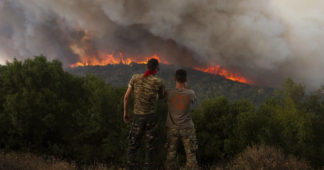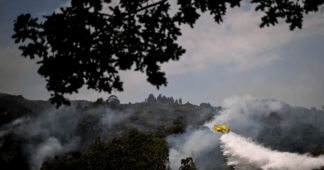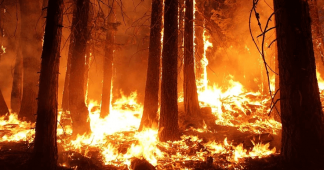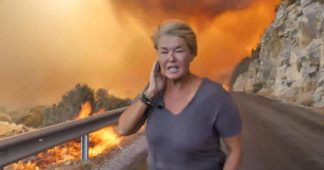Sep 3, 2023
Heat, fires, torrential rains, hurricanes and storms. Much of the northern hemisphere has been hit by extreme weather this summer.
Not all of these events can be directly linked to climate change. It may take some time for scientists to figure out what exactly is going on.
But in recent weeks, major meteorological records have been broken in quick succession, with experts’ concern turning to the climate crisis.
As summer draws to a close, the with the BBC publishes an extensive report with the six extreme weather phenomena that hit the planet this summer.
Among the extreme weather phenomena are the unprecedented fires in Greece.
The extreme heatwave in the UK
In the UK, balmy early summer days may seem like a distant memory after weeks of unsettled weather – but this year was the hottest June on record in the UK.
The average mean temperature, counting both days and cooler nights, was 15,8C, breaking the previous record by 0,9C.
Record temperatures were recorded in 72 of the 97 UK areas where temperature data is collected.
The fires in Greece
One million tons of carbon dioxide were released into the atmosphere by the Greek fires.
The extreme heat that hit the Mediterranean last July resulted in dry conditions for wildfires. Between July 1 and 25, the huge fires in Greece emitted one million tons of carbon dioxide.
In Athens, the Acropolis – Greece’s most popular tourist attraction – was forced to close to protect visitors from the potentially deadly heat.
By the end of the month, scientists from the World team Weather Attribution – which examines the role of climate change in specific extreme weather events – had analyzed the data and concluded that heatwaves would be “virtually impossible” without human-induced climate change.
El Nino, which started in June, could help make it 2023 hottest year ever, scientists believe. The powerful natural phenomenon is linked to warmer temperatures and occurs every two to seven years when warm water rises to the surface in the Pacific off the coast of South America.
Typhoon Doksuri
Typhoon Doksuri caused $15 billion in economic losses.
More than a million people were evacuated as winds reached 240 miles per hour. In Beijing, the amount of rain that fell broke a 140-year-old record. The floods damaged roads and bridges, submerged cars and destroyed construction sites.
In the months leading up to the typhoon, China, South Korea and other parts of East Asia had experienced record heat. Scientists from the World Weather Attribution Group said climate change made China’s July heat wave 50 times more likely.
The deadly fires in Hawaii
At least 388 people are dead or missing after the wildfires in Hawaii.
On August 8, the island of Maui in Hawaii faced a deadly wildfire.
Much of the island was in drought, and the dry vegetation provided the ideal fuel to spread the flames, fanned by raging winds from a passing typhoon.
Fires in Canada
Almost 15,6 million hectares were burned in the fires in Canada. On August 19, another large fire started in eastern Canada. Fifteen thousand households were ordered to evacuate, while hundreds of miles to the north, a massive fire threatened the city of Yellowknife in the Northwest Territories.
So far 15,6 million hectares (37,8 million acres) of land have burned across Canada – an area larger than New York state or England.
A study by the World Weather Attribution Group found that climate change made the hot, dry and windy conditions that fueled the fires in Quebec, Canada, in June at least twice as likely and 20-50% more intense
The floods in California
An estimated 26 million people are at risk of flooding in California.
On August 21, the usually wildfire-prepared state of California saw its first tropical storm in 84 years.
Hurricane Hilary made landfall in northern Mexico, killing at least one person when a family of five was swept out to sea.
The storm put 26 million people in the state at risk and 25.000 households across Los Angeles were without power as the storm moved through the city and caused flash flooding.
Palm Springs saw its heaviest hour of rain ever recorded in the city, according to California’s governor.
In Death Valley, floodwaters filled the famously dry landscape, turning its valleys into raging rivers.
We remind our readers that publication of articles on our site does not mean that we agree with what is written. Our policy is to publish anything which we consider of interest, so as to assist our readers in forming their opinions. Sometimes we even publish articles with which we totally disagree, since we believe it is important for our readers to be informed on as wide a spectrum of views as possible.











